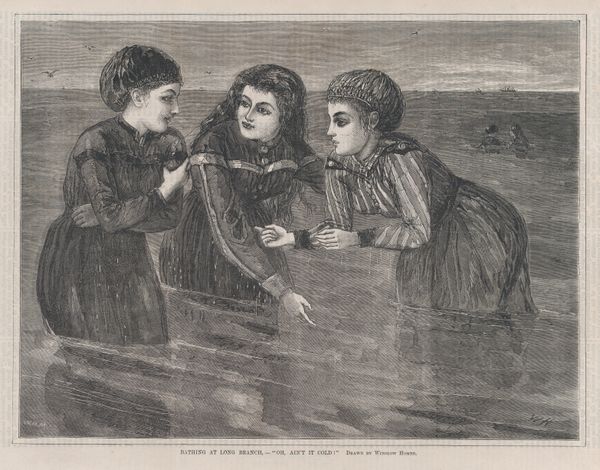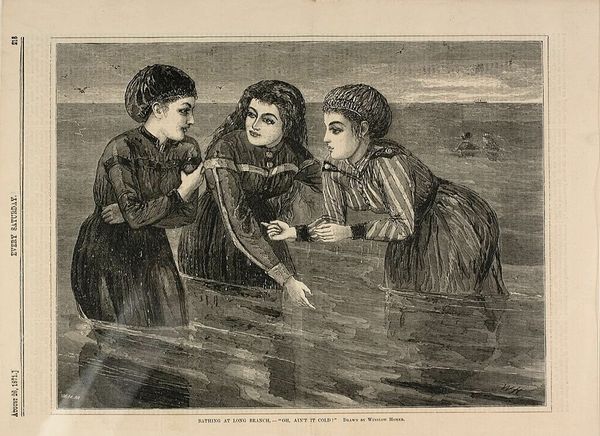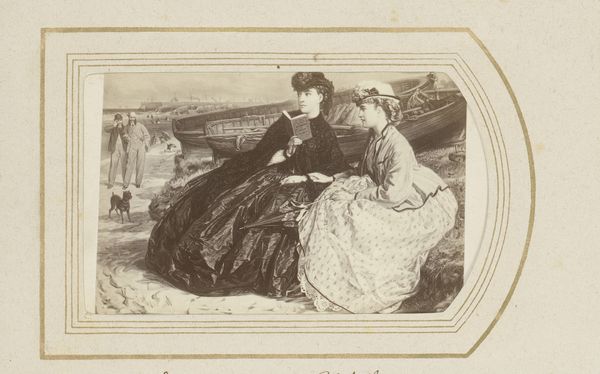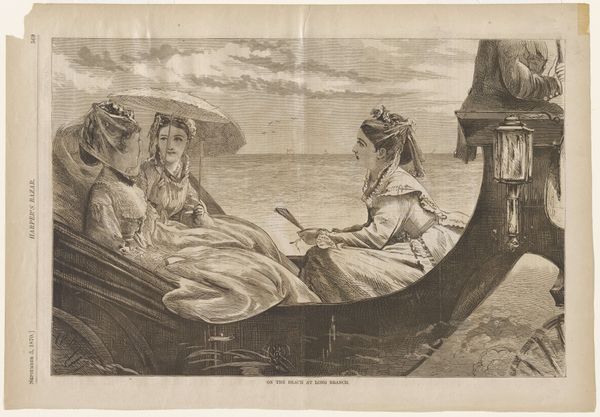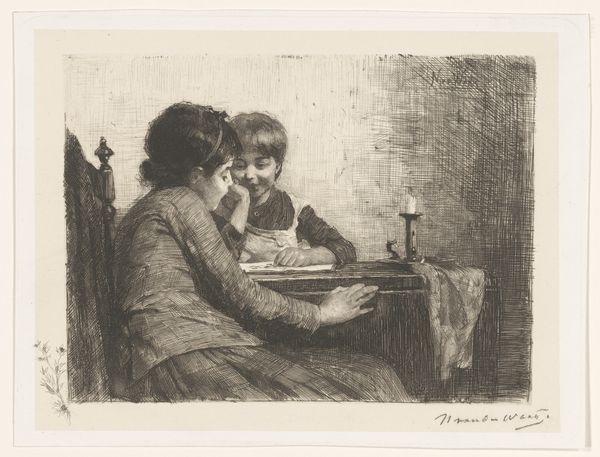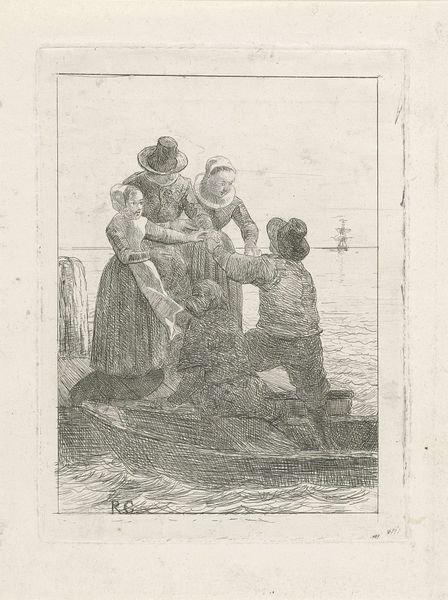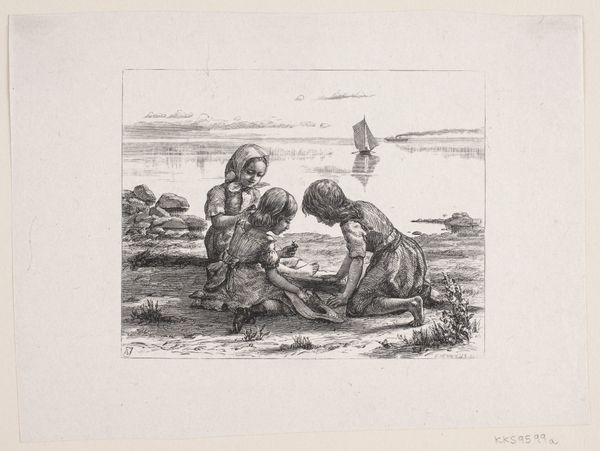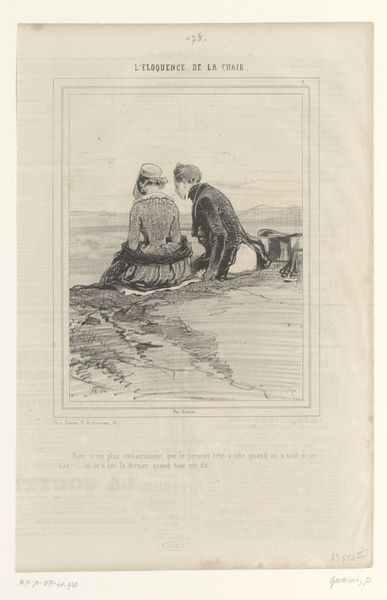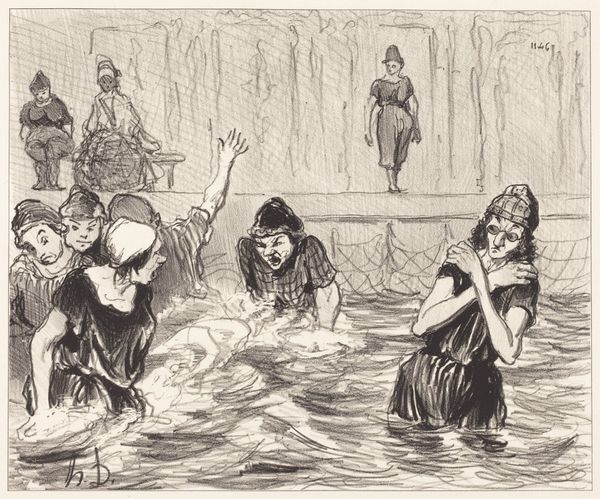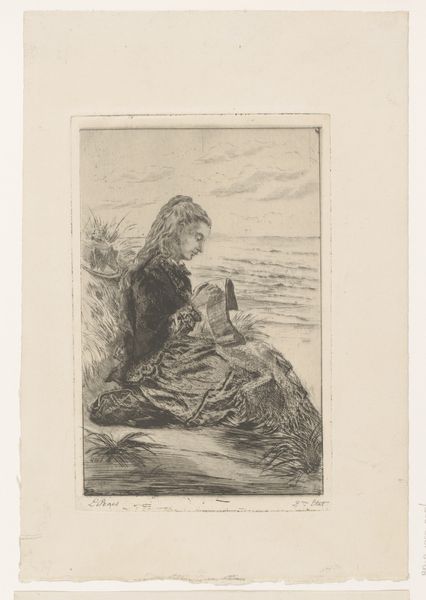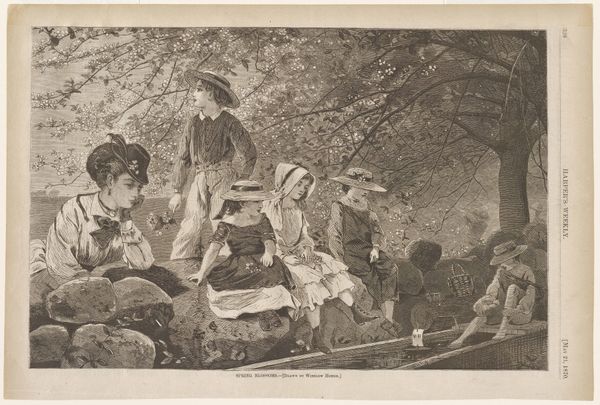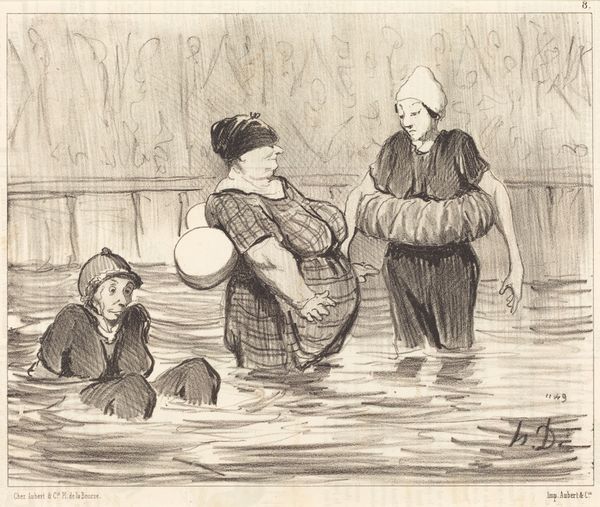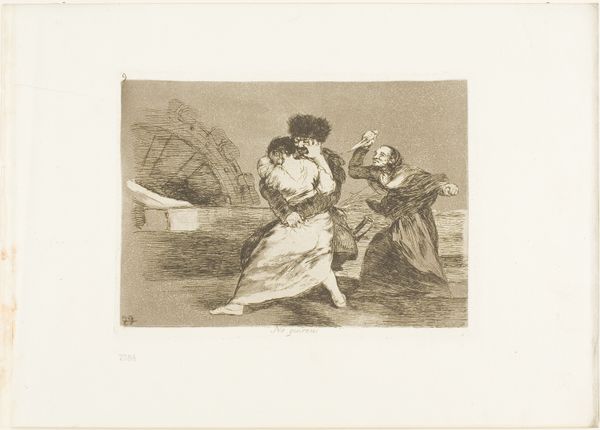
print, plein-air, woodcut, wood-engraving
#
16_19th-century
#
narrative-art
# print
#
impressionism
#
plein-air
#
landscape
#
figuration
#
woodcut
#
united-states
#
genre-painting
#
history-painting
#
wood-engraving
Dimensions: 8 7/8 x 11 13/16 in. (22.5 x 30.0 cm)
Copyright: Public Domain
Editor: Winslow Homer's wood engraving, "Bathing at Long Branch---Oh," made in 1871, shows three women wading into the sea, conversing with each other. I'm struck by the textures he achieves with simple lines, especially to show movement in the water. What do you see in this print? Curator: Considering Homer’s historical context and the material constraints of producing wood engravings for mass circulation, I see this piece as speaking volumes about the burgeoning leisure culture in post-Civil War America. These bathing dresses, and the very act of leisure, are commodities indicative of a shift in social structures. Editor: So, you are saying the image reflects industrial and economic changes? Curator: Exactly. How are these scenes being circulated and consumed? Think about the paper itself, the process of creating multiple identical images for "Every Saturday" magazine through skilled labor. This print isn't just a picture; it’s a product of industrial printing technology democratizing art and reinforcing cultural norms through readily available imagery. Editor: That's fascinating. I never thought about the wood engraving as a sort of manufactured object influencing consumer behavior. It makes you think about the labor behind each print, cutting the wood so that an image of middle-class leisure could be disseminated to many consumers. Curator: Indeed! And how does the very availability of this image, cheaply printed and widely circulated, shape the viewer's understanding of class and aspiration? What behaviors were normalized by virtue of this medium? Editor: That makes me look at it differently, less as a picturesque scene and more as evidence of production, consumption, and a carefully constructed view of American society in that era. Curator: Precisely. It moves us beyond admiring the artistic skill into understanding the complex interplay between art, labor, and the shaping of public opinion. Editor: Thanks for pointing that out! It is not only about representation, it's about the mechanics of production and the implications of this specific process in our understanding of art.
Comments
No comments
Be the first to comment and join the conversation on the ultimate creative platform.
